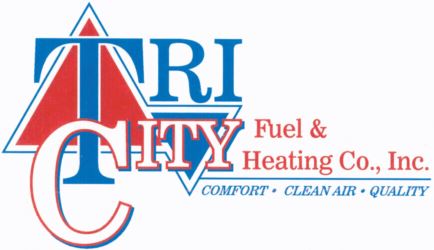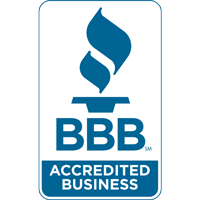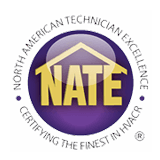
A furnace is usually a background player in your home, ensuring you're warm across the cold winter months. It frequently won't be noticed until something breaks down.
One cause could be that your furnace has a cracked heat exchanger. It can be a safety risk, so it’s worthwhile to familiarize yourself with the symptoms of a cracked heat exchanger and what to do if you suspect that might be the problem.
What Is a Heat Exchanger in a Furnace?
A heat exchanger transfers heat from the combustion chamber inside your furnace to the air that flows inside the system. It generally handles this via coils or tubes that heat the air while serving as a barrier to keep byproducts produced in the combustion chamber, called flue gasses, from getting out into your home.
Is a Cracked Heat Exchanger Dangerous?
Thanks to its important role, it isn't surprising that a damaged heat exchanger can be hazardous. Cracks in the heat exchanger can allow dangerous gasses – including carbon monoxide, which can be lethal – to be distributed through your home.
For this reason, never run your furnace if you suspect you're dealing with a cracked heat exchanger, as doing so could make your entire household ill. Call an HVAC professional right away if you believe your heater has a cracked heat exchanger that needs to be repaired.
Four Signs of a Cracked Heat Exchanger:
- Furnace turns off: A cracked heat exchanger could cause your furnace to turn off.
- Strange Smells: If the air escaping your furnace has a powerful chemical odor, it might be evidence gas is slipping through cracks in your heat exchanger. These byproducts, which may smell like formaldehyde, are a common warning sign.
- Carbon monoxide alarm is triggered or you notice poisoning symptoms: If a cracked heat exchanger is relieving carbon monoxide in your home, your carbon monoxide alarm should go off or family members could experience signs of carbon monoxide poisoning. Complications include headaches, dizziness, weakness, nausea, vomiting or feeling sleepy. If your alarm goes off or you feel unusually tired, leave the home as soon as you can and then call for help.
- Soot: If you notice black sooty accumulating near the exterior of your furnace, it’s another sign something may be seriously wrong.
What You Should Do if Your Furnace Heat Exchanger is Cracked
If you believe your furnace has a cracked heat exchanger, call a pro with extensive experience in furnace installation West Columbia as soon as possible so they can inspect your system and, if required, perform a furnace heat exchanger replacement. Costs often fluctuate depending on the situation, but estimates can roughly suggest $1,000 to $3,000.
Fortunately, the good news is that heat exchangers are generally covered by the warranty. It's a good idea to review the warranty paperwork on your furnace, since while the warranty won't always cover the entire cost of repairs, it still may significantly reduce your bill.
How to Avoid a Cracked Heat Exchanger in Your Home
One of the best ways to prevent a problem in your furnace overall is via routine furnace maintenance. Furnaces offer the most benefits when they operate efficiently. Hiring a certified professional to inspect your furnace for worn-out parts, clogs in the air filters and other potential problems can keep you from getting a big bill later on.
It’s also beneficial to review your furnace filters every few months – it’s ideal some filters be changed every 90 days or sooner if they are dirty or grimy. While the filters are not part of the heat exchanger itself, the strain of pulling air through a clogged filter makes the entire furnace work more vigorously to accomplish its job. And the harder your furnace works, the more deterioration pieces like the heat exchanger will endure.


